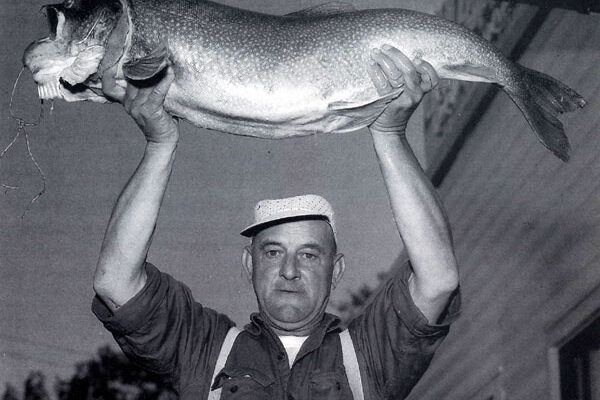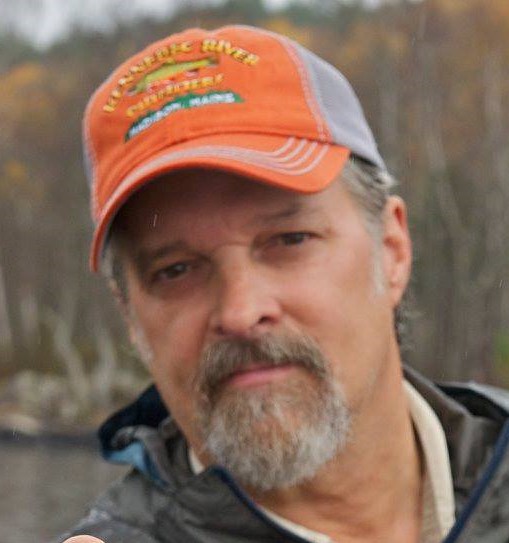
Encouraging harvest as a fisheries management tool is bad science
By Bob Mallard
I was disappointed, but unfortunately not surprised, to find a newsletter from the Maine Department of Inland Fisheries and Wildlife in my inbox last week titled: “Consider harvesting your catch.” This falls right in line with the DIF&W’s “Management by Harvest” mantra, where anglers are made to believe that harvest is necessary to maintain healthy fisheries, and catch and release is to be blamed for Maine’s fishing woes.

To say, “[catch and release] may still help some fisheries,” is reckless, counter to science, wasteful and an affront to modern fisheries management. Catch and release helps most fisheries, and doesn’t truly hurt any. And to say, “other present day fisheries (and in Maine’s case, many fisheries) rely on harvest by anglers to maintain healthy fish populations,” is equally, and in some ways, more egregious. That this kind of message continues to come from those charged with protecting our resources is troublesome.
Thankfully, I wasn’t the only one who found the message in the DIF&W’s newsletter concerning. One unsolicited post from an angler on my Facebook page said the following: “Bob, just got this email. Is this a real [DIF&W] email or have I been hacked?” That the angler thought it was a joke speaks volumes. And this is what Emily Bastian, one of Maine’s most active and visible native fish advocates, had to say:
“That there is no mention of the importance of preserving our wild native fish, no distinction between wild and stocked, and no note about rare species and unique lifeforms found in Maine is disappointing to say the least,” said Bastian, the national vice chair of the Native Fish Coalition.
When I made my own Facebook post about the DIF&W newsletter, here’s what some people, including several scientists and activists, had to say: “Obviously using faulty applications of basic ecology principles to try to justify this,” “to claim [harvest] is an essential tool for creating healthy fisheries doesn’t even pass the straight face test,” “their claims are contradicted by biological, ecological, and fisheries management science, principles, and practice,” “It’s propaganda with a 3rd grader level misunderstanding of ecology thrown in to make it sound reasonable,” “Any responsible biologist, ecologist, or fisheries manager would be embarrassed by such intentional misinformation,” “claiming that harvest is the primary tool for creating healthy fisheries is simply indefensible,” “Simply appalling, to say that harvest is needed for proper management is inaccurate and dangerously misleading,” and “I didn’t think [DIF&W] could go any lower.”
Several emails I received echoed the concerns of the Facebook users: “So many things wrong with this article it is tough to know even where to begin!,” one wrote.
“To make no mention of responsible stewardship of Maine’s wild native fish is disgraceful, and to imply that [catch and release] does not work or is antiquated is wrong headed and biologically unsound,” wrote another.
“This appears to be all about supporting the hatcheries to get rid of fish so that they can continue to throw in hatchery fish,” was another response.
For years I have said, when it comes to fish, “while you can harvest yourself into trouble, you can’t harvest your way out of trouble.” Never has this been truer than it is today now that the DIF&W has made harvest a major focus of its management strategy.
Interestingly, the pond I fish with the largest wild brook trout is catch and release. So are the two rivers where I catch my largest brook trout. How can this be if harvest is necessary to maintain size-quality? And why did so many Maine waters have large fish before we started exploiting them? Might there be something else at work here, like generations of taking the top off the population via minimum length limit management? Fish fall under what is called “indeterminate growth,” meaning they continue to grow until they die, or are harvested. If you want big fish, leave them in the water. Brook trout can live up to 10 years or more, but in Maine, a 5-year-old brookie is rare. Might there be a connection?
And to be fair, much of what we are seeing in regard to poor size-quality is a direct result of DIF&W management decisions. Consider Moosehead Lake, where anglers are encouraged to harvest wild native lake trout to improve size-quality. What they don’t mention is their ongoing and ill-advised nonnative landlocked salmon stocking on the lake, which is a major factor in regard to competition for food and space.
And could mysis shrimp, a nonnative crustacean introduced to Moosehead by DIF&W a few decades ago, for reasons that are still not clear, have something to do with it? Here’s what some experts have to say about mysis shrimp and lake trout.
The problem with regard to landlocked salmon growth on Sebago Lake, one of just four native populations in Maine, is likewise self-inflicted. As the DIF&W actively encourages anglers to harvest nonnative lake trout from Sebago, we must remember how they got there: The DIF&W put them there. The same situation exists on Mooselookmeguntic Lake in Rangeley, our largest State Heritage Fish water, where DIF&W-introduced landlocked salmon have stunted. As we speak, local anglers are working with the department on a salmon culling tournament to improve size-quality. Meanwhile, a proposal to harvest nonnative bass from the nearby Rapid River to help brook trout was rejected.
One water, the only stocked brook trout pond I fish, has seen a notable decline in size-quality over the past several years. After imposing a protective slot limit, 6-12 inches with none over, we saw a notable increase in average size. We also saw traffic drop off a bit as those looking to harvest large fish apparently moved on. It now appears we may be overstocking the water. Unfortunately, I don’t dare approach DIF&W about it as I fear they would remove the protective regulations rather than reduce stocking which would be the prudent thing to do as it would save money and solve the problem.
The current attacks on low-impact angling on the part of DIF&W is wrong-headed. It flies in the face of science and economics, and it is not working. The constant meddling in our fisheries is why we are now experiencing problems with regard to size, numbers, invasive species, etc. Landlocked salmon, the most moved-around species in Maine, are doing poorly in many, arguably most, waters they are found.
Might it be because they don’t belong there? This husbandry-centric management needs to stop before Maine loses a big part of what makes it unique: Wild native fish. Our focus should be on natural abundance and size-quality, and the best way to get there is to stop trying to play God.